
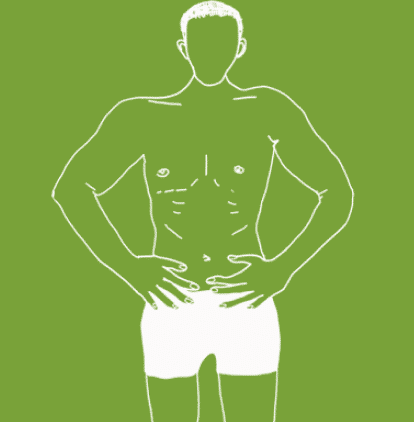
Common symptoms include:
- A burning, aching, or itching sensation in the pelvic region including the penis, testicles, anus, or perineum
- Increased discomfort when sitting, working out, or wearing tight garments
- Urinary irregularities such as urgency, frequency, hesitation, or a diminished stream
- Pain during or after sexual climax, particularly in the lower pelvic region
- Difficulties with sexual performance or reduced ejaculation force
- GI-related symptoms like bloating and constipation that may seem unrelated
- Symptoms that come and go or appear without any identifiable cause
- Worsening of pain after physical activity or other triggers
For Echo Park-based men seeking answers and real solutions, pelvic floor physical and occupational therapy is a proven path to long-term relief and recovery.
Common symptoms include:
- A burning, aching, or itching sensation in the pelvic region including the penis, testicles, anus, or perineum
- Increased discomfort when sitting, working out, or wearing tight garments
- Urinary irregularities such as urgency, frequency, hesitation, or a diminished stream
- Pain during or after sexual climax, particularly in the lower pelvic region
- Difficulties with sexual performance or reduced ejaculation force
- GI-related symptoms like bloating and constipation that may seem unrelated
- Symptoms that come and go or appear without any identifiable cause
- Worsening of pain after physical activity or other triggers
For Echo Park-based men seeking answers and real solutions, pelvic floor physical and occupational therapy is a proven path to long-term relief and recovery.

Associated Diagnoses
Chronic Pelvic Pain Syndrome/Male Pelvic Pain, Chronic Nonbacterial Prostatitis, Pudendal Neuralgia, Hard Flaccid Syndrome and Interstitial Cystitis/Painful Bladder Syndrome are all pain syndromes that cause pelvic pain due to pelvic floor dysfunction.
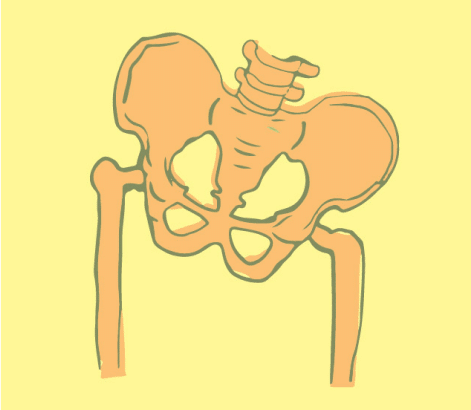
Associated Diagnoses
Chronic Pelvic Pain Syndrome/Male Pelvic Pain, Chronic Nonbacterial Prostatitis, Pudendal Neuralgia, Hard Flaccid Syndrome and Interstitial Cystitis/Painful Bladder Syndrome are all pain syndromes that cause pelvic pain due to pelvic floor dysfunction.

- Surgical trauma (vasectomy, benign prostatic hyperplasia (BPH) interventions, prostatectomy)
- Orthopedic injuries or other traumas (spine, hip, knee, and/or ankle injuries/pathology, accidents)
- Biomechanical or structural dysfunction (hip dysfunction, piriformis syndrome, scoliosis, leg length discrepancy)
- Excessive exercise or changes to exercise routine
- Excessive sitting
- Chronic constipation and straining
- Jelqing and/or attempts at gential enhancement or foreskin regeneration
- In rare cases, bladder, prostate, or sexually transmitted infections after successful resolution of infection
- The majority of men with pelvic pain, with or without urinary or bowel complaints, have pelvic floor dysfunction

Causes of Pelvic Pain
- Surgical trauma (vasectomy, benign prostatic hyperplasia (BPH) interventions, prostatectomy)
- Orthopedic injuries or other traumas (spine, hip, knee, and/or ankle injuries/pathology, accidents)
- Biomechanical or structural dysfunction (hip dysfunction, piriformis syndrome, scoliosis, leg length discrepancy)
- Excessive exercise or changes to exercise routine
- Excessive sitting
- Chronic constipation and straining
- Jelqing and/or attempts at gential enhancement or foreskin regeneration
- In rare cases, bladder, prostate, or sexually transmitted infections after successful resolution of infection
- The majority of men with pelvic pain, with or without urinary or bowel complaints, have pelvic floor dysfunction
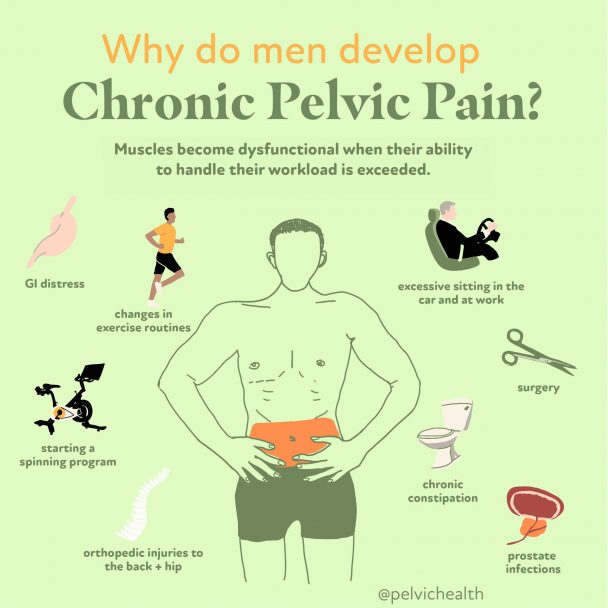
Diagnostic Challenges
For many men, receiving the correct diagnosis for pelvic pain is a long and discouraging process. Research indicates that it can take up to seven years to pinpoint the actual cause. This extended wait is often because the symptoms mirror those seen in prostate infections, bladder issues, or STIs, leading healthcare providers to prescribe antibiotics without thorough testing. As a result, many cases of pelvic floor dysfunction go unrecognized and untreated. The situation is made worse by the fact that most pelvic floor physical and occupational therapistss are trained primarily to work with female patients, leaving a significant gap in care for men. PHRC has stepped in to fill that void, with a team well-versed in male pelvic health. In fact, some days, the majority of our patients are men—proof that male-focused pelvic therapy is both essential and effective.
Receiving a diagnosis of “prostatitis” is common for men with pelvic pain, but for most, this label is misleading. While antibiotics are frequently prescribed, the reality is that over 90% of these individuals don’t have a bacterial prostate infection. Rather, their symptoms align more closely with Chronic Pelvic Pain Syndrome (CPPS), particularly the non-bacterial types known as Category IIIa and IIIb, according to the National Institutes of Health. These forms of pelvic pain are not infectious and instead relate to muscle, nerve, or inflammatory dysfunction—factors that antibiotics are not designed to address.
The NIH outlines five categories of prostatitis syndromes:
Category I: Acute bacterial prostatitis – includes strong pelvic pain, infection markers, and a sudden bacterial UTI.
Category II: Chronic bacterial prostatitis – repeated UTIs caused by persistent prostate bacteria.
Category IIIa: Inflammatory CPPS – confirmed by detecting white blood cells in diagnostic fluids, indicating inflammation.
Category IIIb: Non-inflammatory CPPS – shows no white blood cells, even though the symptoms persist.
Category IV: Asymptomatic inflammatory prostatitis – prostate inflammation found in test results despite the absence of any complaints.
Diagnostic Challenges
For many men, receiving the correct diagnosis for pelvic pain is a long and discouraging process. Research indicates that it can take up to seven years to pinpoint the actual cause. This extended wait is often because the symptoms mirror those seen in prostate infections, bladder issues, or STIs, leading healthcare providers to prescribe antibiotics without thorough testing. As a result, many cases of pelvic floor dysfunction go unrecognized and untreated. The situation is made worse by the fact that most pelvic floor physical and occupational therapistss are trained primarily to work with female patients, leaving a significant gap in care for men. PHRC has stepped in to fill that void, with a team well-versed in male pelvic health. In fact, some days, the majority of our patients are men—proof that male-focused pelvic therapy is both essential and effective.
Receiving a diagnosis of “prostatitis” is common for men with pelvic pain, but for most, this label is misleading. While antibiotics are frequently prescribed, the reality is that over 90% of these individuals don’t have a bacterial prostate infection. Rather, their symptoms align more closely with Chronic Pelvic Pain Syndrome (CPPS), particularly the non-bacterial types known as Category IIIa and IIIb, according to the National Institutes of Health. These forms of pelvic pain are not infectious and instead relate to muscle, nerve, or inflammatory dysfunction—factors that antibiotics are not designed to address.
The NIH outlines five categories of prostatitis syndromes:
Category I: Acute bacterial prostatitis – includes strong pelvic pain, infection markers, and a sudden bacterial UTI.
Category II: Chronic bacterial prostatitis – repeated UTIs caused by persistent prostate bacteria.
Category IIIa: Inflammatory CPPS – confirmed by detecting white blood cells in diagnostic fluids, indicating inflammation.
Category IIIb: Non-inflammatory CPPS – shows no white blood cells, even though the symptoms persist.
Category IV: Asymptomatic inflammatory prostatitis – prostate inflammation found in test results despite the absence of any complaints.
Treatment:
How We Can Help You
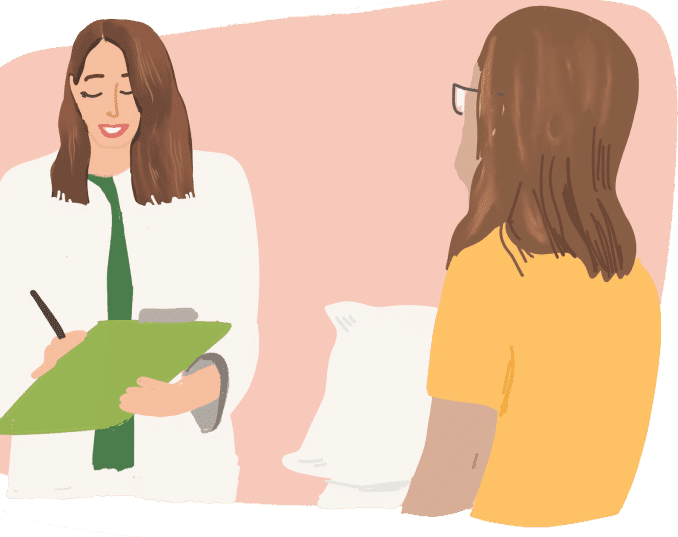
If you’re based in Echo Park and struggling with unresolved pelvic pain, consulting with a pelvic floor physical and occupational therapists can be an essential first step toward meaningful recovery. In your first session, your therapist will take a comprehensive history—reviewing your symptoms, how long they’ve been present, any previous treatments, and what diagnoses you’ve received so far. It’s not unusual for Echo Park patients to feel frustrated after seeing multiple providers without relief, and we recognize how difficult that can be.
The physical examination will involve testing the pelvic floor muscles, observing movement patterns, and evaluating the condition of the joints, nerves, and nearby tissues. Your therapist will then share what they’ve found and outline a customized plan of care. Most plans call for one or two sessions a week for around 12 weeks, accompanied by a structured home exercise program. If you’re under the care of other doctors, we’ll coordinate closely to ensure your treatment is cohesive and effective. We’re proud to support the men of Echo Park in taking control of their health and reclaiming a better quality of life.
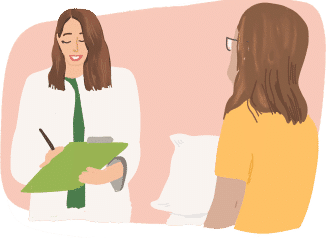
Treatment:
How We Can Help You
If you’re based in Echo Park and struggling with unresolved pelvic pain, consulting with a pelvic floor physical and occupational therapists can be an essential first step toward meaningful recovery. In your first session, your therapist will take a comprehensive history—reviewing your symptoms, how long they’ve been present, any previous treatments, and what diagnoses you’ve received so far. It’s not unusual for Echo Park patients to feel frustrated after seeing multiple providers without relief, and we recognize how difficult that can be.
The physical examination will involve testing the pelvic floor muscles, observing movement patterns, and evaluating the condition of the joints, nerves, and nearby tissues. Your therapist will then share what they’ve found and outline a customized plan of care. Most plans call for one or two sessions a week for around 12 weeks, accompanied by a structured home exercise program. If you’re under the care of other doctors, we’ll coordinate closely to ensure your treatment is cohesive and effective. We’re proud to support the men of Echo Park in taking control of their health and reclaiming a better quality of life.
How Can We Help You?
Have something to ask or share? Please use the form below to get in touch. Be sure to provide your email address so we can respond to you directly. Your privacy matters to us—everything you submit will remain confidential and will only be used to address your inquiry.

Join The Newsletter. Win a copy of our book, “Pelvic Pain Explained!”
We love getting to know our website visitors. Please tell us a little bit about yourself and get the latest info via PHRC e-newsletter!
*Subscribers automatically eligible to win our book, “Pelvic Pain Explained.”
More than just a medical overview, Pelvic Pain Explained offers a compassionate look into the lived experiences of individuals managing persistent pelvic pain. It walks readers through the many layers of frustration and complexity that arise from misdiagnoses, inadequate treatments, and the overwhelming number of care options to consider. The book also poignantly explores the isolation and misunderstanding that often accompany “invisible” health issues, making it clear just how profoundly pelvic pain can disrupt one’s emotional health, relationships, and overall quality of life.


